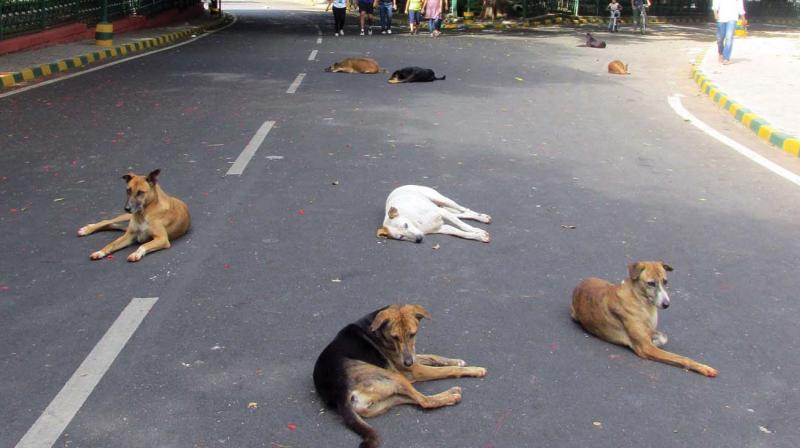BBMP straying: No solution in sight for dog menace
Those who happen to be out at the time have a hard time getting home as the dogs chase their cars or bikes, leaving them petrified.

Bengalureans are accustomed to hearing the howling and barking late at night as the stray dogs make the roads their domain as the city sleeps. Those who happen to be out at the time have a hard time getting home as the dogs chase their cars or bikes, leaving them petrified.
Going by the BBMP’s own admission the city has 3.7 lakh stray dogs even today despite its Animal Birth Control (ABC) programme under which the dogs are taken off the streets and returned to them after neutering.
Although the BBMP spends over Rs 3 crore annually on the ABC programme, there is not much to show for it on the ground as the dog population is only increasing on the streets. One theory is that the garbage piles around the city draw them in large numbers, and the BBMP seems to agree as it claims the stray population is rising due to the migration of dogs from surrounding villages to the city in search of food.
Defending the BBMP’s efforts to control the stray dog population, an official from its Animal Husbandry Department claims it is carrying out its ABC programme in all 198 wards of the city.
While admitting that there are nearly 3.7 lakh stray dogs even today despite the programme, he says “the dog population is increasing not due to failure of ABC but migration of strays into BBMP areas from nearby villages.”
The civic body claims to be neutering over 50,000 animals every year, but this offers hardly any comfort to Bengalureans, who are forced to combat the rising number of strays on the city’s roads. Children have been among the worst affected as strays have been known to even maul babies in packs.
“Just after sundown, dogs near our house become very active. They keep barking leaving us afraid to step out at night,” complains Ms Dhanashree, a resident of Kempe Gowda Nagar.
While children are stopped from playing on the streets for fear of the dogs in the area, many office-goers, who return home after 10 pm, have no option but to make their way fearfully from the bus stops to their houses. Says Mr Uttam Kumar, a resident of Kottigepalya, who works in a gaming company and returns home after 10 pm, “ The 15 minute walk from the bus stop to my house is miserable as I am constantly afraid of being attacked by the strays.” Sometimes the fear gets the better of him and he takes an auto home, paying a hefty fare or appeals to his friends to come and pick him up.
As Bengalureans continue to deal with the stray dogs, the BBMP has still not come up with a way to come to their rescue, its ABC programme having proved hardly a deterrent over the years. Failing to take a multi-pronged approach to the problem – tackling garbage on one hand and neutering the dogs on the other- it remains a mute spectator as always to the rising menace.

